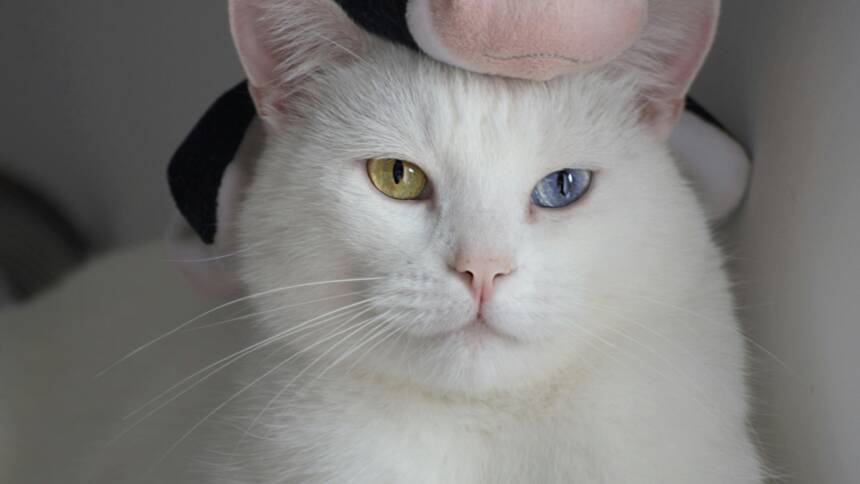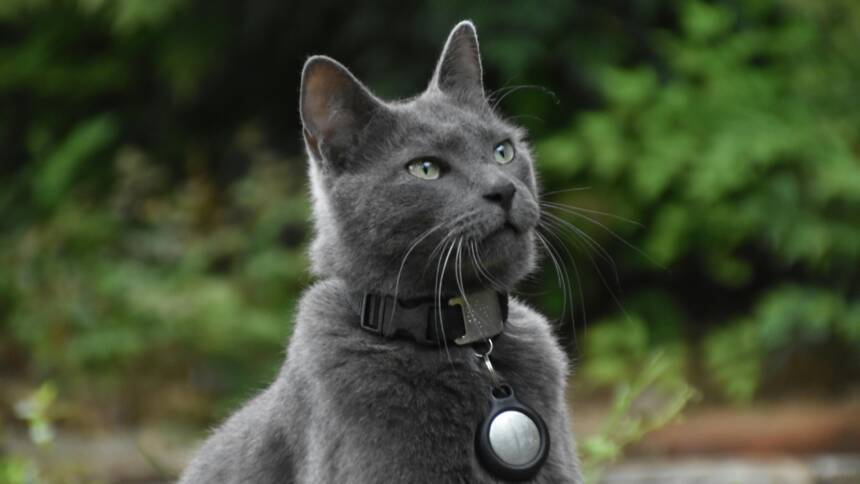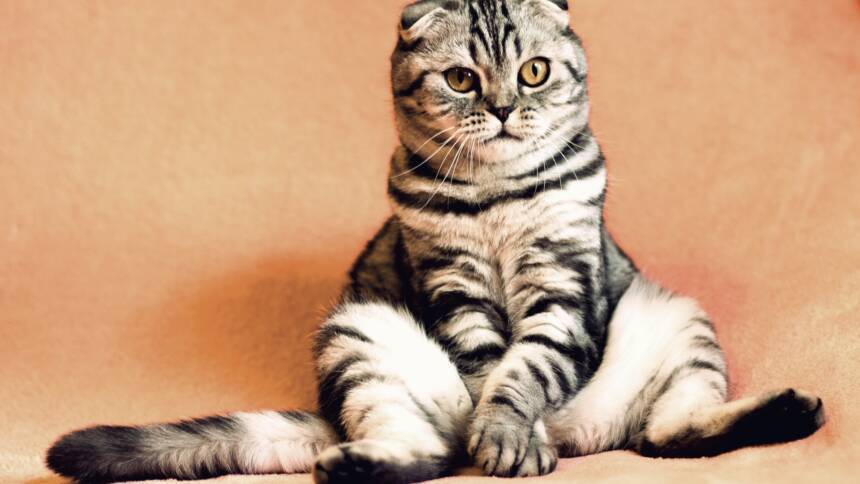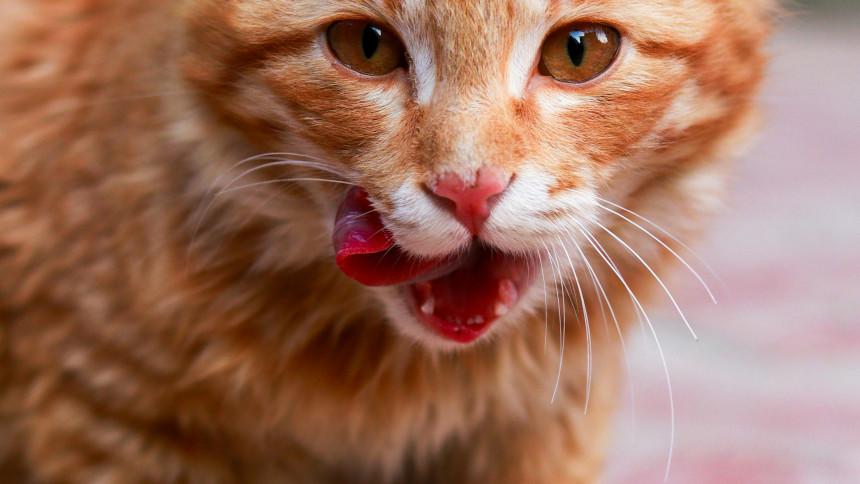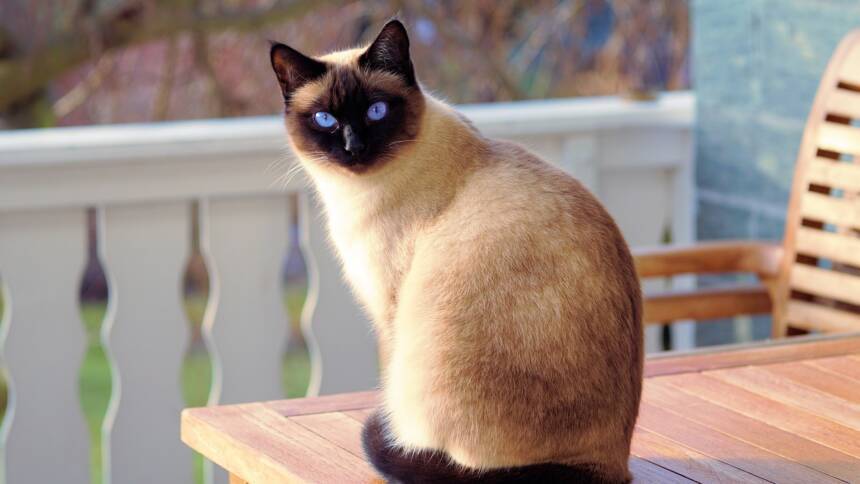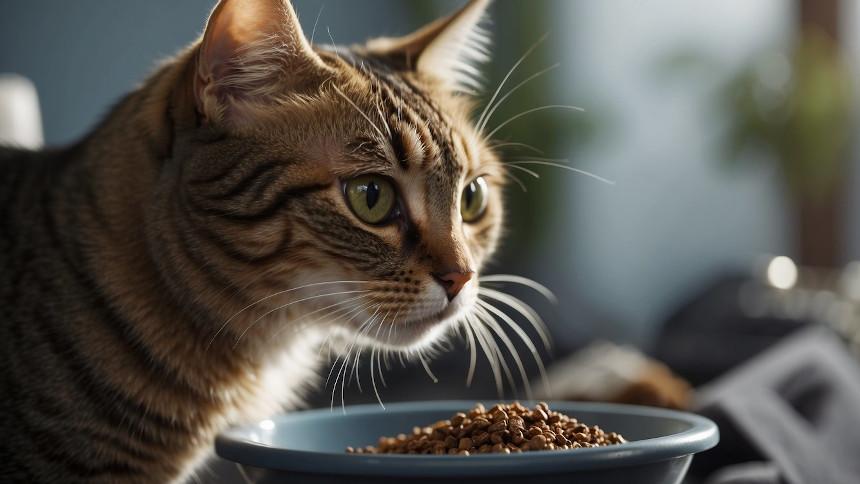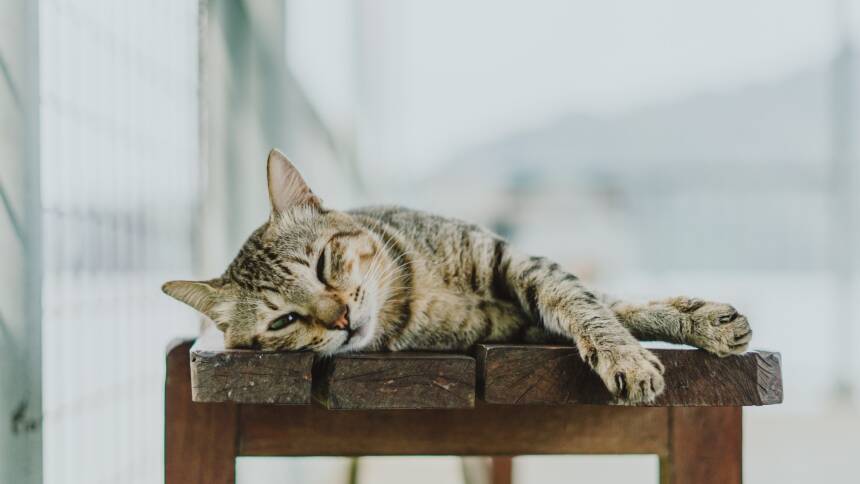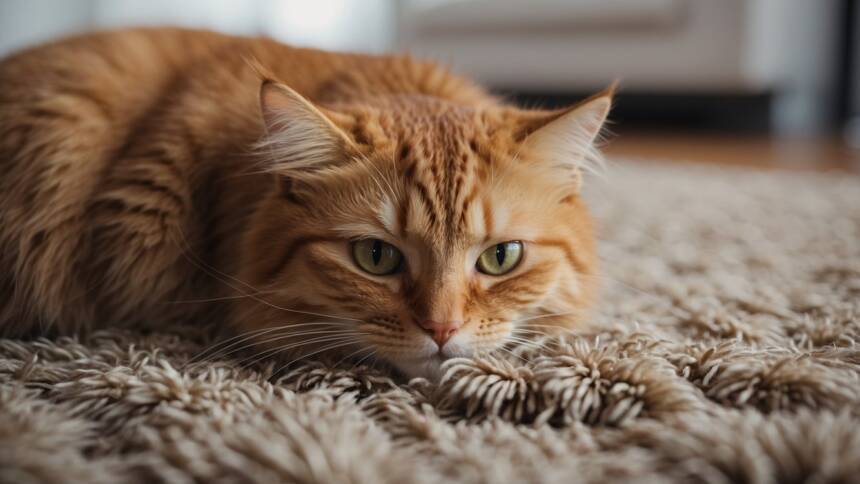When a cat’s eye appears runny or watery, it is typically a response to irritation or an indication of an underlying health issue. The tear film on a cat’s eye serves multiple purposes: it keeps the eye moist, delivers nutrients, and helps to combat bacteria. Essentially, the presence of excessive tearing or discharge can be the eye’s way of attempting to manage a threat to its health.
A variety of causes can lead to a cat’s eyes running, including simple irritants such as dust, or more concerning health problems like infections. If a cat is experiencing watery eyes, the discharge may be thin and clear, or it might be clouded and tinted with color that suggests an infection, such as conjunctivitis. Observing a cat’s behavior and physical symptoms in conjunction with eye discharge can be key to understanding the cause. Commonly, issues that result in runny eyes may also present with additional signs worth noting, such as redness, squinting, or changes in the eye’s appearance.
Understanding Cat Eye Discharge
Eye discharge in cats can vary in appearance and has a range of causes. Recognizing the type of discharge and its potential origins can guide owners on the appropriate course of action.
Identifying Common Symptoms
Color and Consistency:
- Clear and Watery Discharge: Often associated with irritants such as dust.
- Yellow or Green Discharge: May indicate the presence of an infection like conjunctivitis.
Associated Symptoms:
- Frequent blinking or squinting
- Redness in the eye
- Swollen eyelids
Potential Causes of Eye Discharge
- Infections: Viral or bacterial infections can lead to colorful discharges, either yellow or green.
- Allergens: Allergies to pollen, dust, or certain foods can cause a clear, watery discharge.
- Blockages or Overproduction: Blocked tear ducts or excessive tear production typically result in wateriness.
- Inflammatory Conditions: Conditions such as uveitis, characterized by inflammation inside the eye, might contribute to abnormal discharge.
- Trauma: Physical injury to the eye can lead to various types of discharge, often accompanied by swelling or redness.
Common Eye Infections in Cats
Cat eye infections can lead to symptoms such as redness, swelling, and discharge. Prompt veterinary care is important to prevent complications such as corneal ulcers.
Bacterial Infections
Bacterial infections of the eye in cats commonly present symptoms like discharge, redness, and sometimes pain. A veterinary diagnosis often involves identifying the specific type of bacteria to prescribe the correct antibiotics. Pink eye, or conjunctivitis, is a frequent bacterial condition that can cause considerable discomfort and redness.
Viral Infections
The Feline Herpes Virus is a leading cause of viral eye infections in cats, and it often leads to conjunctivitis. Acutely affected cats may display watery discharge and redness in one or both eyes. Recurrent flare-ups are possible, which requires long-term management under veterinary guidance.
Fungal and Parasitic Infections
While less common, fungal and parasitic infections can cause severe eye problems in cats. Such infections often necessitate specific treatments including antifungal or anti-parasitic medications, as the standard antibiotics for bacterial infections would not be effective. They usually require a more in-depth veterinary investigation to diagnose and treat effectively.
Non-Infectious Eye Conditions
Cat owners should be aware that not all eye issues in felines are the result of infections. Non-infectious eye conditions can arise from allergies, structural abnormalities, or trauma. These issues can cause symptoms such as runny eyes, redness, and discomfort in cats, and they warrant a veterinarian’s assessment to provide appropriate management and treatment.
Allergic Reactions
Cats, like people, can experience allergic conjunctivitis due to exposure to various allergens in their environment. Common triggers include:
- Pollen
- Dust mites
- Mold spores
- Smoke
- Perfumes
- Household chemicals
Symptoms:
- Runny eyes or excessive tearing
- Redness in the whites of the eyes and conjunctiva
Structural Eye Problems
Certain cats may inherit or develop structural eye abnormalities. Two of the most prevalent conditions are:
- Entropion, where the eyelid rolls inward, causing irritation and possible damage to the cornea
- Cataracts, which manifest as a cloudy appearance in the eye, leading to impaired vision
Diagnosis: A veterinary ophthalmologist may need to perform specific tests to identify these conditions accurately.
Trauma-Induced Conditions
Eye trauma in cats can occur due to accidents or fights with other animals. Potential issues include:
- Corneal ulcers from scratches
- Foreign body presence causing irritation or damage
- Cloudy eye due to internal injury
First Aid: Immediate veterinary care is crucial. In the case of trauma, owners should avoid self-treatment and seek professional help to prevent further eye damage.
Symptoms and Complications
In this section, the focus will be on recognizing the common symptoms related to cat eye issues, understanding the secondary symptoms that may arise, and being aware of potential long-term complications.
Physical and Behavioral Signs
- Swelling: Eyelid or conjunctival inflammation often presents as visible swelling.
- Watery Eyes: An excessive production of tears, typically apparent as moisture or discharge from the eyes.
- Squinting: A cat may frequently squint or partially close an eye to relieve discomfort or due to decreased vision.
- Inflammation: The eye and surrounding tissue may show signs of inflammation, such as redness and warmth.
Secondary Symptoms
- Lethargy: Decreased energy levels or a marked decrease in activity might indicate systemic involvement.
- Fever: may sometimes accompany eye infections, indicating the body’s response to a potential infection.
Long-Term Complications
- Glaucoma: Increased pressure within the eye leading to potential vision loss.
- Scarring: Chronic or severe eye conditions could result in scarring, potentially impacting vision.
Diagnosis and Examinations
When a cat displays signs of runny or watery eyes, a thorough diagnosis by a vet is essential to determine the underlying cause and provide appropriate treatment.
Veterinary Assessment
The initial step in addressing a cat’s eye issue is a comprehensive veterinary assessment. During the exam, the vet will conduct:
- Visual inspection: Evaluation of discharge characteristics and any accompanying signs such as redness or squinting.
- Physical examination: General health check to identify any related systemic conditions.
This baseline assessment may also involve a basic eye test to gauge the cat’s visual capabilities.
Advanced Diagnostic Tests
If initial findings suggest a more complex condition, the vet may refer the cat to an ophthalmologist or conduct advanced diagnostic tests which can include:
- Schirmer tear test: Measures tear production to rule out dry eye conditions.
- Fluorescein staining: Highlights corneal lesions or ulcers invisible to the naked eye.
- Tonometry: Assesses intraocular pressure to check for glaucoma or uveitis.
These specialized tests help the vet arrive at a precise diagnosis, ensuring that the treatment plan is tailored to the cat’s specific needs.
Treatment Options
In managing runny and watery eyes in cats, a variety of treatment options are available. These range from pharmaceutical interventions to surgical procedures, depending on the underlying cause. Proper home care is also critical in supporting a cat’s recovery.
Medications and Eye Drops
Pharmaceutical treatments commonly include antibiotics or steroids to combat infection or inflammation. Eye drops may serve multiple purposes; some lubricate the eyes, while others contain antibiotics or steroids. If a cat has an eye ulcer, specific antibiotics or drops designed to promote healing and prevent infection might be necessary. A veterinarian might prescribe a course like this:
- Antibiotic eye drops: Apply one drop in the affected eye(s) three times per day.
- Steroid eye drops: Use as directed to reduce inflammation following a full assessment by a veterinarian.
Surgical Interventions
Surgery may be needed in cases where structural abnormalities contribute to eye discharge, or if there is a severe eye ulcer or injury. Surgical interventions should be performed by a qualified veterinarian and might include:
- Entropion surgery: Correcting eyelids that roll inward, causing irritation.
- Conjunctivitis surgery: In extreme cases, to remove excessive scar tissue.
- Ulcer repair: For deep ulcers that don’t heal with medication.
Home Care and Management
For supportive home care, owners can:
- Clean the cat’s eyes: Gently wipe away discharge with a clean, wet cloth.
- Administer medications: Ensure all prescribed medications are given on schedule.
- Monitor changes: Watch for variations in discharge or the cat’s comfort levels.
Maintaining a quiet and clean environment for recovery is essential. All treatment plans should be followed as outlined by one’s veterinarian to ensure the health and comfort of the cat.
Prevention and Maintenance
Managing a cat’s eye health involves proactive strategies to reduce the risk of eye conditions. Owners can play a significant role in prevention by focusing on regular eye check-ups, tweaking the cat’s living environment, and ensuring their immune health through vaccination.
Regular Eye Check-Ups
Routine veterinary examinations are crucial to prevent eye problems in cats. These check-ups can catch potential issues early, when they are most treatable. Owners should look for signs such as excessive tearing, redness, or changes in eye appearance and report these to their veterinarian promptly.
Environmental Adjustments
To minimize the risk, cat owners should mitigate environmental irritants. This includes maintaining a clean home to reduce dust and avoiding smoking or chemical fumes around the cat. Monitoring pollen levels and limiting outdoor exposure during high pollen seasons can assist in reducing allergic reactions.
Vaccination and Immune Health
A strong immune system, supported by regular vaccinations, helps defend against eye infections. Cat owners should ensure their pets receive all the recommended vaccines, as some feline viruses can lead to serious eye issues. A healthy diet also plays a pivotal role in sustaining the cat’s immune response to various pathogens.
